Some of the main concerns of the early Rishis, the Kavis, of the Rigveda, were the speculations on the elusive questions, such as:
How does the world originate? In what manner are men created? By what manner are they united with the existence? Who creates; and, who ordains? From what does this world spring up; and, to what does it ultimately return?
The immediate background to the Indian Philosophy is to be found in the Ukthas (hymns) and Udgithas (recitations) ascribed, in this regard, to the ancient sages (Kavis) of the Rigveda.
The initial philosophic reflections received impetus from the daily experience of things; such as: one changing into another; and, reappearing at the appropriate seasons.
Such constant mutation of things of one’s experience must have roused a sense of wonder and amazement in persons who were lively; and were keen observers of life; and, who were at home with the nature around them.
Prof. Beni-madhab Barua remarks that in ancient India, there was indeed no specific term for what we now call as “philosophy” other than Ukthas or Udgitha; (though its Kavis were erudite theoreticians and truth-seekers).
Thus, the hymns of the Rig Veda (Uktha) and its recitation (Udgitha) itself came to be known as philosophizing. That was perhaps because they did not regard ‘knowing’ (vid) as separate from other aspects of’ ‘being’.
And, it continued to be so until such epithets as Darshana, Brahma-vidya etc. came up in the later periods. By the time of the Upanishads, ‘philosophy’ was a well-recognized branch of study. Most of philosophers and thinkers of the Upanishads were scholars in the traditional mold. Many of them were teachers of great repute.
In contrast; a Kavi in Rig Veda was an inspired Rishi who could see the un-seen. He is the sublime poet who envisioned the mantras (mantra drastaraha); and who conceived the self-evident knowledge (Svatah Pramana) by intuition. A Kavi is also ‘the hearer of the Truth’ (kavayah Satya-srurtah). That is the reason the Vedas are regarded as Surtis, revealed scriptures; and thus A-paurusheya, not authored by any physical agency.
Philosophy in the Vedic ages was generally understood as the search carried on by the Kavis, the Rishis, within their heart , for discovering the relation between the existence (Vyakta) and the distant primordial cause (Avyakta) – Sato bamdham asati (सतो बन्धुमसति RV.10.129.4).
Some even considered what we might call philosophy as Samprasnam; the honest and earnest enquiry; the questioning; or the true doubt – as distinguished from that of a sceptic or the suspicion of an agnostic.
The search for the Ultimate Reality; and the essence that underlies all existence was the explicit quest of the Kavis of the Rigveda.
It is generally accepted; if the object of philosophy is to present a regular system with regard to the essential conditions of knowledge and of the existence of things, then these Vedic Rishis were the foremost philosophical thinkers of our age.
*
Another philosopher Mahidasa pointed out that the task of philosophy is to explain one’s experience. And, all philosophical investigations should be kept within the bounds of experience. By ‘experience’ he perhaps meant a person’s relation and interaction with the rest of the world and with himself. The maxim that Mahidasa laid down for himself was:
“I know the universe and myself as far as I know the gods; and I know the gods as far as I know the universe and myself” (Aitareya Aranyaka-2.1 .7. 3-7; 2.1.8.2).
The term ‘gods’ in his statements is taken to mean the hymns (uktha) or the elements (Bhutani).
*
The redoubtable philosopher Dhirgatamas, in his unique manner, preferred to call philosophy as sheer ‘ignorance seeking knowledge’. The knowledge, according to him, consisted in ascertaining the true nature of one, single original cause, from which the plurality of all this existence emanated.
अअचिकित्वान् । चिकितुषः । चित् । अत्र । कवीन् । पृच्छामि । विद्मने । न । विद्वान् । वि । यः । तस्तम्भ । षट् । इमा । रजांसि । अजस्य । रूपे । किम् । अपि । स्वित् । एकम् ॥॥ १.१६४.०६ ॥
For one who does not know the true meaning of the Vedas, of what use are they for him ?
ऋचः । अक्षरे । परमे । विओमन् । यस्मिन् । देवाः । अधि । विश्वे । निसेदुः । यः । तत् । न । वेद । किम् । ऋचा । करिष्यति । ये । इत् । तत् । विदुः । ते । इमे । सम् । आसते ॥ 1.164.39॥
**
His question to all the great and wise thinkers was :
What is that one original abiding element which, manifested in the form of the unborn sun; and has established and upholds this world-system?
That Great Question (Samprasnam) has continued to engage generations after generations of philosophers in varied forms and in all the regions of the earth.
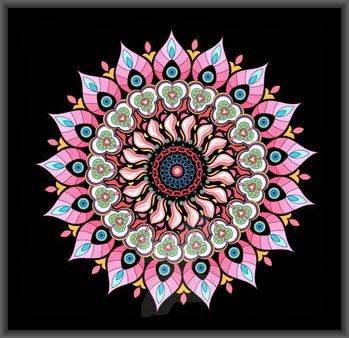
As mentioned earlier; some of the main concerns of the early Rishis, the Kavis, of the Rigveda were the speculations on the elusive questions, such as:
- How does the world originate?
- In what manner are men created?
- By what manner are they united with the existence?
- Who creates; and, who ordains?
- From what does this world spring up; and, to what does it return?
Thus, the desire to determine the first cause of the universe was indeed very keen among the Vedic sages; and, it grew keener when sages like Aghamarsana, Prajapathi, Dhirgatamas, attempted to trace this first cause to some primal material substance; and went on to press the enquiry further; at the same time, doubting at each stage, whether pursuing further with such enquiry would indeed lead to any credible result or reliable conclusion.
The First period of the Rigveda could perhaps be called as its creative or reflective phase.
The wise ones were in awe of nature. They marveled at the steady rising and setting of the sun, cycles of season – particularly the rainy one – so essential for agriculture, appearance and disappearance of the moon, the starry sky and the milky way. They wondered how all of this came about.
They seemed to believe that it is difficult to understand the real nature of anything unless we know when and how it was born. The true nature of things really lies in their genesis.
“ He who knows the father below by what is above, and he who knows the father who is above by what is below is called the poet / sage (कवियमानः).”
अवः । परेण । पितरम् । यः । अस्य । अनुवेद । परः । एना । अवरेण । कवियमानः । कः । इह । प्र । वोचत् । देवम् । मनः । कुतः । अधि । प्रजातम् ॥ 1.164.18
**
Dhirgatamas stands at the apex of all, wondering and asking questions to all the great and wise thinkers; such as:
“What is that one original abiding element which, manifested in the form of the unborn Sun; and has established and upholds this world-system?”
अचिकित्वान् । चिकितुषः । चित् । अत्र । कवीन् । पृच्छामि । विद्मने । न । विद्वान् । वि । यः । तस्तम्भ । षट् । इमा । रजांसि । अजस्य । रूपे । किम् । अपि । स्वित् । एकम् ॥ || ६||
Who saw the universe when it first came into existence? Who can tell? what is the source of creation?
कः । अद्धा । वेद । कः । इह । प्र । वोचत् । कुतः । आजाता । कुतः । इयम् । विसृष्टिः । अर्वाक् । देवाः । अस्य । विसर्जनेन । अथ । कः । वेद । यतः । आबभूव ॥॥१०.१२९.०६ ॥
”Where is the Teacher, knowing the solution? Where is the pupil, coming to the Teacher seeking revelation of the mystery? Who has seen the First Cause, from which emanated the creation? How have the elements (Bhutas) come into existence?
कः । ददर्श । प्रथमम् । जायमानम् । अस्थन्वन्तम् । यत् । अनस्था । बिभर्ति । भूम्याः । असुः । असृक् । आत्मा । क्व । स्वित् । कः । विद्वांसम् । उप । गात् । प्रष्टुम् । एतत् ॥॥ 1.164.04 ॥
पृच्छामि । त्वा । परम् । अन्तम् । पृथिव्याः । पृच्छामि । यत्र । भुवनस्य । नाभिः । पृच्छामि । त्वा । वृष्णः । अश्वस्य । रेतः । पृच्छामि । वाचः । परमम् । विओम ॥ 1.164.34॥
The Cauldron is boiling, so I say, whether we know the mystery of its Heat or not. If there be one who claims to know, let him declare it here and now. The one who can expound this secret I will accept him as the teacher.
अचिकित्वान् । चिकितुषः । चित् । अत्र । कवीन् । पृच्छामि । विद्मने । न । विद्वान् । वि । यः । तस्तम्भ । षट् । इमा । रजांसि । अजस्य । रूपे । किम् । अपि । स्वित् । एकम् ॥Rig Veda 1.164.6 ॥
इह । ब्रवीतु । यः । ईम् । अङ्ग । वेद । अस्य । वामस्य । निहितम् । पदम् । वेरिति वेः । शीर्ष्णः । क्षीरम् । दुह्रते । गावः । अस्य । वव्रिम् । वसानाः । उदकम् । पदा । अपुः ॥ 1.164.7 ॥
Which is the tree (wood) – किम् । स्वित् । वनम् – out of which the visible universe was fashioned?
किम् । स्वित् । वनम् । कः । ऊँ इति । सः । वृक्षः । आस । यतः । द्यावापृथिवी इति । निःततक्षुः । मनीषिणः । मनसा । पृच्छत । इत् । ऊँ इति । तत् । यत् । अधिअतिष्ठत् । भुवनानि । धारयन् ॥Rig Veda 10.81.4 ॥
*
And , Dhirgatamas writes in his First Mandala, 140th Sukta, 12th mantra, that our whole life is not a journey in a single boat, we go in one boat, we finish the task, then take another boat, and do another task, then third boat, and so on. These are the voyages of the spirit, searching for Truth.
रथाय । नावम् । उत । नः । गृहाय । नित्यअरित्राम् । पत्वतीम् । रासि । अग्ने । अस्माकम् । वीरान् । उत । नः । मघोनः । जनान् । च । या । पारयात् । शर्म । या । च ॥ १.१४०.१२ ॥
He seems to lay much store by self-knowledge which, according to him, is the primary basis of all cognition. The sage indeed discards the evidence gathered by senses, because they are not always true witnesses; and are not infallible. The senses have a tendency to move ceaselessly in opposite directions. Men mark the one and fail to mark the other.
सतः । बन्धुम् । असति । निः । अविन्दन् । हृदि । प्रतीष्या । कवयः । मनीषा ॥अपाङ् । प्राङ् । एति । स्वधया । गृभीतः । अमर्त्यः । मर्त्येन । सयोनिः । ता । शश्वन्ता । विषूचीना । वियन्ता । नि । अन्यम् । चिक्युः । न । नि । चिक्युः । अन्यम् ॥१.१६४.३८ ॥
What things I am, I truly know not clearly. Mysterious, fettered in my mind, I wander aimlessly.
न । वि । जानामि । यत्इव । इदम् । अस्मि । निण्यः । सम्नद्धः । मनसा । चरामि । यदा । मा । आ । अगन् । प्रथमजाः । ऋतस्य । आत् । इत् । वाचः । अश्नुवे । भागम् । अस्याः ॥१.१६४.३७ ॥
The desire to determine the first cause of the universe was indeed very keen among the Vedic sages; and, it grew keener when sages like Aghamarsana, Prajapathi-Paramestin, Dhirgatamas, Brihaspathi attempted to trace this first cause to some primal material substance. Such enquiries bordering on skepticism were soon thereafter followed by mysticism
Prof. Beni-madhab Barua, in his monumental work: A History of Pre-Buddhistic Indian Philosophy (Motilal-Banarsidass-Delhi-1998) discusses the views, theories and speculations attributed to some Vedic seers; such as: Aghamarsana; Prajapati Paramesthin; Brahmanaspati; and, Dhirgatamas. Among these Kavis, the last mentioned – Dhirgatamas – is regarded as the most eminent thinker.
And, each of those thinkers came up with his own theory or speculation about the creation, evolution and development of the universe.
For instance:
- Aghamarsana declared the Year (Samvatsara – the time-principle, the natural seasons) as the origin of all existence.
- Prajapathi Paramesthin suggested Water (Salila) as elementary matter or the abiding ground of all things.
- Another philosopher, Brahmanaspati called Air (Anila), the friend of water- as the first born, endowed with the generating principle.
- Dhirgatamas maintained that all living beings rest and depend, ultimately, on the Sun.
As Prof. Radha Binod Pal observes: The one common feature in the Philosophy of these Rishis is that each one of them traces the evolution of this universe to some primal substance; to a substance that is active, self-causal; and that which is not determined by anything but by itself. This substance is the Natura Naturans (self-causing activity) ; and, this Universe is Natura Naturata (acted upon).
***
And, just to summarize Dr. Beni-madhab Barua’s elaborate discussions spread over many chapters:
Aghamarṣaṇa (अघमर्षण)
Aghamarṣaṇa (अघमर्षण) was the son of Madhucchandas, who was the son of Rishi Vishwamitra. He was renowned as a great hermit of austerity; as one who had observed the duties pertaining to Vanaprastha (the third of the four stages of life—forest hermit). (Mahabharata, Shanti Parva, Chapter 244, Stanza 16)
Aghamarṣaṇa is the seer of the Rig Veda hymn 10.190, which is famed as Bhava -Brita Sukta. It is said to endow purity and prosperity. It projects the Universe and Time as recurring cycles. He recognizes a reality, which is beyond Time and change. It is the Truth (Rita), which existed before Time.
ऋतं च सत्यं चाभीद्धात्तपसोऽध्यजायत । ततो रात्र्यजायत ततः समुद्रो अर्णवः । १ । समुद्रादर्णवादधि संवत्सरो अजायत । अहोरात्राणि विदधद्विश्वस्य मिषतो वशी । २ I सूर्याचन्द्रमसौ धाता यथापूर्वमकल्पयत् । दिवं च पृथिवीं चैवान्तरिक्षमथो स्वः । ३ ।
According to Aghamarsana, fervor (enthusiasm or dedication- तपसः) is the first creative principle from which the eternal order, harmony and truth were born (ऋतम् । च । सत्यम् । च । – Rita and Sathya).
ऋतम् । च । सत्यम् । च । अभीद्धात् । तपसः । अधि । अजायत । ततः । रात्री । अजायत । ततः । समुद्रः । अर्णवः ॥Rig.10.190.1
And, Ṛta (ऋतं), the well-structured principle of the Universe, existed, in the opinion of Aghamarsana, even prior to diversity; just as the whole exists prior to its divisions. It is eternal; beyond time and change. The universe is a succession of events dotted along the time-less Rita.
It is said; the appearance of sun and moon; of day and night, is regulated; and this harmony, this ordering of everything in the universe is what the ancients named as Ṛta (ऋतं), the universal ordering principle.
It is also the principle of natural order that regulates and coordinates the operation of the universe on the natural, moral and sacrificial levels.
From Ṛta (ऋतं) and Sathya originated the night, which in its turn produced water; and from water originated Samvatasara or the Time principle.
Rishi Aghamarsana laid down a theory of creation, involving what is now known as the Doctrine of Time.
He speaks of the Year (Time-principle) as being the Lord, the Great Creator, Preserver and Destroyer of all things. He tells us that warmth (तपसः Tapas) is the first creative principle from which the Eternal Law and Truth (ऋतं च सत्यं) were born. From these was produced the Night (Tamas).
The Night produced water; and, from water originated the Year (Samvatsara) or the Time-principle. The Year formed, in due order, the sun and the moon; the heaven and the earth; the firmament and light; and ordained the days and nights. The year is the Lord of life and of death’.
समुद्रात् । अर्णवात् । अधि । सव्वँत्सरः । अजायत । अहोरात्राणि । विदधत् । विश्वस्य । मिषतः । वशी ॥ Rig.10.190.2
Time is the highest, the Lord of all. Time is the eternal substance out of which all things are formed; and in which everything lives, moves and has its being. Time is indeed supreme.
**
Bhartrhari (11th century) in his celebrated work Vakyapadiya talks about the power of Time, the Kaala-Shakthi, the creative power (karaka-Shakthi) of the One unchanging Absolute (Shabda-Brahman) manifesting itself as the dynamic diversity that is experienced as the created world (Jagat).
He considers Shabda-tattva or Shabda Brahman as the foundation of the Universe; and, it is eternal.
The essence of Bhartrhari’s viewpoint is that Time (Kaala) is not different from Shabda Brahman which is identical with Para Brahman. The power of Time is an independent power (svtantra shakthi) of Shabda Brahman which allows sequences to come into being. Through Time, durations are perceived; the things come to be and pass away. Yet, Time has no divisions. Time is the efficient cause by which Brahman controls the cycles of the Universe.
When that Time sequence appears as differentiated objects, then Time as a power seems to be different from Brahman; but, really it is not so (Vakyapadiya 1.2).
एकमेव यदाम्नातं भिन्नशक्तिव्यपाश्रयात् । अपृथक्त्वेऽपि शक्तिभ्यः पृथक्त्वेनेव वर्तते ॥२॥
ekam-eva-yad-āmnātaṃ-bhinnaśaktivyapāśrayāt/apṛthaktve+api-śaktibhyaḥ-pṛthaktveneva-vartate
Prof. Radha Binod Pal writes:
The Aghamarshana Sukta, by giving us the genesis of the universe, imparted an idea of a supreme governing order of Truth and Truthfulness (ऋतम् । च । सत्यम्), reigning all over; and, encouraged man to follow the right and true path of virtue.
ऋतम् । च । सत्यम् । च । अभीद्धात् । तपसः । अधि । अजायत । ततः । रात्री । अजायत । ततः । समुद्रः । अर्णवः ॥ (RV.10.190.1)
But; his is an exceedingly short thesis from which nothing, by way of a clear statement, can be elicited. It is difficult to clearly ascertain his own philosophical position. Nor do we know either what led him to speak of the Year as being the Lord, Great creator, Preserver and Destroyer of all things.
It is said; for this purpose, we need to look through some of the older Cosmogonic Hymns. which may have constituted the immediate background for Indian philosophy; and, as well as through some of the latter Brahmana-texts.
*
But; Aghamarsana plainly tells us that warmth (Tapas) – Creative Fervour – the first creative impulse (which in the later came to be named as Kama, the intense motive force changing universe), — is the first creative principle from which the eternal law and truth (Rita) were born. From these was produced the Night (Tamas), which in its turn produced water; and, from water originated Samvatasara or the Time principle.
This Samvatsara produced in due order: the Sun, the Moon, the heaven, the earth, the firmament and light. And then originated, what we call, the days and nights. This Samvatsara is the Lord of Life and Death.
[Prof. Radha Binod Pal remarks : Though Rishi Aghamarṣaṇa declared Samvatsara, the Time-principle, as the eternal substance out of which all things are formed; he did recognize a reality beyond time and change. And, this reality is Rta – the order, harmony and truth that governs the Universe. ऋतम् – Rta existed before ‘Time’.
The appearance of sun and moon, of day and night, is regulated; and this harmony, ordering of everything in the Universe is by ऋतम् .
The Rishi seems to be running round in circles.]
[ In the hymns of the Atharva Veda, the Year (Samvathsara) was replaced by the general term Kala, the Time. But, the basic doctrine of Time was retained. Further it was glorified by saying: Time is the endless cycle of existence. It is the eternal substance out of which all things are formed, and in which everything lives, moves and has its being. Time is indeed God supreme.
Time is described as a thousand-eyed and ageless; an eternal observer, unbound by the constraints of impermanence; and ceaselessly growing across manifold universes.
A profound infinite expansiveness, generating multiple realities. How can anyone and decipher its enigmatic nature ?
*
Time is compared to a horse:
का॒लो अश्वो॑ वहति स॒प्तर॑श्मिः सहस्रा॒क्षो अ॒जरो॒ भूरि॑रेताः। तमा रो॑हन्ति क॒वयो॑ विप॒श्चित॒स्तस्य॑ च॒क्रा भुव॑नानि॒ विश्वा॑ ॥AV. 19.53.1॥
Kaala, or Time is a horse that carries seven rays, a thousand-eyed, ageless entity brimming with abundant Vigor. The wise continually seek to ascend it. Its wheels are the entire cosmos, containing all the worlds.”
Time again is compared to a chariot having seven wheels:
स॒प्त च॒क्रान्व॑हति का॒ल ए॒ष स॒प्तास्य॒ नाभी॑र॒मृतं॒ न्वक्षः॑। स इ॒मा विश्वा॒ भुव॑नान्यञ्जत्का॒लः स ई॑यते प्रथ॒मो नु दे॒वः ॥AV. 19.53.2॥
Time, carrying the seven wheels, has seven naves and an immortal axle. It generated all these different worlds. Time, the first among deities, moves forward.
Time’s ever flowing dynamic nature is depicted through the analogy of full pot (Purna-kumbha) that never empties. It is a lively, ever-shifting entity, much like a pot filled with swirling water.
पू॒र्णः कु॒म्भोऽधि॑ का॒ल आहि॑त॒स्तं वै पश्या॑मो बहु॒धा नु सन्तः॑। स इ॒मा विश्वा॒ भुव॑नानि प्र॒त्यङ्का॒लं तमा॒हुः प॑र॒मे वYaमन् ॥AV. 19.53.3॥
Time is placed in the full pot (cosmos). We observe it from various perspectives. It has produced all these different worlds. Time, they say, is situated in the highest heaven.
Time is seen as the ultimate power, unrivalled by any other force, emphasizing its crucial role in the structure, function, and very existence of the universe. It invites us to envision Time as a metaphysical concept that surpasses conventional human understanding of past, present, and future.
स ए॒व सं भुव॑ना॒न्याभ॑र॒त्स ए॒व सं भुव॑नानि॒ पर्यै॑त्। पि॒ता सन्न॑भवत्पु॒त्र ए॑षां॒ तस्मा॒द्वै नान्यत्पर॑मस्ति॒ तेजः॑ ॥AV. 19.53.4॥
Time alone upheld all the worlds, and it alone encircles them. It became the father, yet is the child of these worlds. Therefore, indeed, there is no energy greater than it.
Time governs everything; and envelops within it everything it administers .
का॒ले मनः॑ का॒ले प्रा॒णः का॒ले नाम॑ स॒माहि॑तम्। का॒लेन॒ सर्वा॑ नन्द॒न्त्याग॑तेन प्र॒जा इ॒माः ॥AV. 19.53.7॥
Within Time is the mind; within Time is the breath; within Time is all names gathered. By Time, all these beings rejoice as they arrive.
Time directs all existence, growth, and enlightenment. Time was there even before gods, wisdom or seers.
का॒लः प्र॒जा अ॑सृजत का॒लो अग्रे॑ प्र॒जाप॑तिम्। स्व॑यं॒भूः क॒श्यपः॑ का॒लात्तपः॑ का॒लाद॑जायत ॥AV. 19.53.4॥
Time created life. Time was there before the gods. Knowledge and austerity were born from Time.]
Prajapati Paramesthin (परमेष्ठिन्)
Another ancient philosopher Prajapati Paramesthin (परमेष्ठिन्) – a much respected spiritual master and teacher – according to Dr. Beni-Madhab Barua (A History of Pre-Buddhist Indian Philosophy- pages 12 to 16 – Motilal Banarsidas-1921), theorized that in the beginning , Being came out of Non-Being (Asatah sad ajyata). He said; That original matter or primitive substance comes neither under the definition of Being nor under that of Non-Being
Further, he asserted that Water (Salila) is the fundamental Principle. It is from Water, all things are formed; and, Water is the original substance of all that exists. It was the unfathomable depth of water (gahanam gambhiram). And, there was nothing but water. Water is the elementary matter or abiding original ground of things. Water is the original substance of all that exists.
***
[Paramesthin started his inquiry with water; but, did not extend it beyond water. He insisted that it was From Water all things are formed; Water is the original substance of all that exists. He took a rigid stand; and did not push his investigation beyond water.]
He asserted that whether one knows it, or does not know it (Veda-yadi va na-Veda), when there was neither Non-existence nor Existence; when there was neither death nor immortality; and, when there was no visible sign to distinguish between days and nights, (that is to say, between light and darkness) — Nasid rajo no vyoma na tarhi na ratrya ahna asith praketah – then there was Water, the unfathomable depth of water (Gahanam Gambhiram); and, there was nothing but water.
न । असत् । आसीत् । नो इति । सत् । आसीत् । तदानीम् । न । आसीत् । रजः । नो इति । विओम । परः । यत् । किम् । आ । अवरीवरिति । कुह । कस्य । शर्मन् । अम्भः । किम् । आसीत् । गहनम् । गभीरम् ॥ १०.१२९.०१ ॥
“Water was that one thing, breathless; breathed by its own nature (Anidavatam svadhaya tad ekam, tasmad-dhyanan na parah kimcan nasa ). There was darkness (Tamas); and, concealed at first in this darkness was Water in its indiscriminate or unmanifested form (apraketam). Water was all that existed (sarvama idam).”
तमः । आसीत् । तमसा । गूळ्हम् । अग्रे । अप्रकेतम् । सलिलम् । सर्वम् । आः । इदम् । तुच्छ्येन । आभु । अपिहितम् । यत् । आसीत् । तपसः । तत् । महिना । अजायत । एकम् ॥१०.१२९.०३ ॥
[ Mahidasa says: The material cause of the world is water. All this was water indeed. It was the root; and, world was the shoot. He is the father, the earth, fire, &c. are the sons. Whatever there is belonging to the son, belongs to the father; whatever there is belonging to the father, belongs to the son. AA.2.8.2)
Prajapathi causes the world; the world causes water; the water causes life; life begets herbs and living creatures; the manas is the heart of thinking creature; it causes thinking mind; the thinking mind expresses through thoughtful speech; the thoughtful speech leads to thoughtful action; and the thoughtful action is in reality the man (Purusha), the abode of Brahman” (AA 1.3.4.9)]
*
Water, according to Prajapati Paramesthin, transformed itself into particular things by some inherent principle to which he gave the name Kama, the Cosmic Desire (or, the will to create or the will to be).
Kama, the Cosmic-urge, according to him, was the motivator of the movement or development that is inherent in matter itself; and, it is integrated into the endless progressions and processes of nature.
While everything was void and shapeless; by the power of Warmth , was born that longing called Kama. And; Kama was the motive force of the changing universe — the first germ of Mind (manaso retah), and this Mind was no other than the Sun “whose eye controls this world in highest heaven,”
Accordingly, for him, the principle of movement or development is inherent in matter itself; and involved in this is the vast processes of nature.
Water then transformed itself into particular things by the inherent principle – Kama, the Cosmic Desire. The sages having meditated in their hearts, discovered, by their wisdom, the relation of the existent with the non-existent. And, they said, this Mind of the Supreme Being was no other than the Sun “whose eye controls this world in highest heaven. ”
कामः । तत् । अग्रे । सम् । अवर्तत । अधि । मनसः । रेतः । प्रथमम् । यत् । आसीत् । सतः । बन्धुम् । असति । निः । अविन्दन् । हृदि । प्रतीष्या । कवयः । मनीषा ॥१०.१२९.०४ ॥
Prajapati Paramesthin gives his theory of creation; thus:
There was nothing in the beginning; neither Sat nor A-Sat; neither the existent nor the non-existent, neither the being nor non-being; nothing beyond the great One, the pure abstract immovable being having no beginning nor end, but always indivisible and perfect.
न । असत् । आसीत् । नो इति । सत् । आसीत् । तदानीम् । न । आसीत् । रजः । नो इति । विओम । परः । यत्। किम् । आ । अवरीवरिति । कुह । कस्य । शर्मन् । अम्भः । किम् । आसीत् । गहनम् । गभीरम् ॥ Rig.10.129.1
Death was not then; nor was there immortality: no sign was there of the days and nights; That One Thing, breathless, breathed by its own nature: apart from it was nothing whatsoever.
न । मृत्युः । आसीत् । अमृतम् । न । तर्हि । न । रात्र्याः । अह्नः । आसीत् । प्रकेतः । आनीत् । अवातम् । स्वधया । तत् । एकम् । तस्मात् । ह । अन्यत् । न । परः । किम् । चन । आस ॥ Rig.10.129.2
There was darkness covered by darkness in the beginning, all this (world) was undistinguishable water; that empty united (world) which was covered by a mere nothing, was produced through the power of austerity
तमः । आसीत् । तमसा । गूळ्हम् । अग्रे । अप्रकेतम् । सलिलम् । सर्वम् । आः । इदम् । तुच्छ्येन । आभु । अपिहितम् । यत् । आसीत् । तपसः । तत् । महिना । अजायत । एकम् ॥॥ Rig.10.129.3
Thereafter arose the intense desire (कामः – Kama), the first seed of the mind {manaso retah), the germ of the spirit or the first creative impulse. The sages who searched within their hearts discovered, by their wisdom, the relation that binds the existent with the Non-existent.
कामः । तत् । अग्रे । सम् । अवर्तत । अधि । मनसः । रेतः । प्रथमम् । यत् । आसीत् । सतः । बन्धुम् । असति । निः । अविन्दन् । हृदि । प्रतीष्या । कवयः । मनीषा ॥ ॥ Rig.10.129.4
Who truly knows; and who can here declare it, when this creation came into being. it was born and whence comes this creation? The gods, that we know, are later than this world’s creation. When such is the case, who then knows, with certainty, when all of this first came into being; from what material cause, and from what creative cause, did it arise?
कः । अद्धा । वेद । कः । इह । प्र । वोचत् । कुतः । आजाता । कुतः । इयम् । विसृष्टिः । अर्वाक् । देवाः । अस्य । विसर्जनेन । अथ । कः । वेद । यतः । आबभूव ॥ Rig.10.129.6
He, from whom we believe this creation arose, whether he formed it all or did not form it? No one knows. Whether he knows or perhaps even he may not know at all. If he knows not no one else does.
इयम् । विसृष्टिः । यतः । आबभूव । यदि । वा । दधे । यदि । वा । न । यः । अस्य । अधिअक्षः । परमे । विओमन् । सः । अङ्ग । वेद । यदि । वा । न । वेद ॥Rig.10.129.7
Prof. Radha Binod Pal explains:
The Sage Paramesthin not only differs from Aghamarṣaṇa but even goes a step further. He does not rest content with describing merely the process of creation, but sings of the force impelling towards the same. He said; It was Kama the impulse behind everything that followed.
The difference between the two sages is indeed fundamental. They disagreed as to where to seek for the root principles of the things and of knowledge: Aghamarṣaṇa sought for it in the object, something extraneous; while Paramesthin found it in the mind, in the world of thought.
Paramesthin declared : there was nothing in the beginning; neither Sat nor A-sat; neither the existent nor the non-existent; there was nothing beyond the great the pure abstract immovable being having no beginning nor end, but always indivisible and perfect.
The sage seems at times to be given to skepticism; and yet we find him already conscious of the need of faith and as such tending to mysticism. The position assumed by him is indeed that of a naturalist, and his conception of nature was entirely dynamic. To him the principle of movement for development is inherent in matter itself.
The world evolves from this immanent energy of nature – स्वधया, and the movement as a whole is self-determined.
Yet; the problem must remain unsolved: the origin must remain unknown.
But is it knowable at all? ! !
यो अस्याध्यक्षः परमे व्योमन्त्सो अङ्ग वेद यदि वा न वेद
In the philosophy of this Rishi, again, we can trace the Vedic conception of evolution. Progress in the universal evolution of entities is the divergence from the simple to the complex, from formless homogeneity to varied heterogeneity, accompanied by the greatest similarity and profoundest correlation of parts.
The philosopher expresses this by saying that from the one, the complete whole, before the existence of any sub-divisions of the great unit, there came a division and separation of parts, which tend to develop into distinct and concrete units or wholes developed to their fulness. The philosophy of this Rishi indeed evinces that noble illumination of human soul which brought into religion a perception of the unity of God and of the consequent brotherhood of mankind.
Brahmaṇaspati (ब्रह्मणस्पति)
Brihaspati is mentioned in the Vedas as ‘Lord of prayer or the Vedas’; a Vedic deity. Subsequently he became one of the nine planetary deities (Navagraha) representing the planet Jupiter (Guru). He is also known by other names, such as: Jiva, Dhishanaand, Animisha-acharya, Brahmanaspati, Purohit, Angirasa, etc. He is also said to control the clouds and rain; and thus help the world by bringing to life and protecting vegetation. Some to believe that Brahmaṇaspati is another name for Brhaspati, the preceptor of the gods (Deva-Guru).
Dr. Barua states : Brahmaṇaspati , the author of Riks in Rigveda .10.72 , stated his views about the origin of the world. However, the hymn must be considered as one of the most unintelligible; and it would be vain to attempt to bring out anything very definite from it.
It is indeed difficult to understand Brahmaṇaspati’s theory of the birth of Sat (Being) from A-sat (Non-Being).
Yet; it could be said that he set himself the task to inquire into the nature of the world; and its condition prior to the generation of heavenly beings and all the elemental forces.
Generally, he tells that Being was born out of Non-Being. But he does not clearly explain what he meant by Being or Non-Being. We may, however, surmise that Brahmaṇaspati meant to mean Non-Being as the fundamental principle (Rita) that governs the universe.
As per the philosopher Brahmanaspati; The universe was at first non-existent. There was neither the heaven nor the earth, nor the mid-air. What we call as the Existence originally sprang from the Non-existent; and, evolves further on its own accord. That was his fundamental proposition.
देवानाम् । पूर्व्ये । युगे । असतः । सत् । अजायत । तत् । आशाः । अनु । अजायन्त । तत् । उत्तानपदः । परि ॥ Rig.10.72.3
He argued that the principle of movement or development is inherent in matter itself; and, it is part of the vast processes of nature.
In other words, the world evolves from its inherent energy (स्वधया – Svadhaya); the movement as a whole is self-determined and self-regulated.
Brahmaṇaspati begins with the promise that he would give us the particulars of the origin of gods, who are much praised in hymns of the Vedas.
देवानाम् । नु । वयम् । जाना । प्र । वोचाम । विपन्यया । उक्थेषु । शस्यमानेषु । यः । पश्यात् । उत्तरे । युगे ॥ Rig.10.72.1
Before the gods were born, the existent emerged out of the non-existent
– देवानाम् । पूर्व्ये । युगे । असतः । सत् । अजायत ॥ Rig. 10.72.2
The earth sprang out of the productive power moving upwards. The regions (quarters) came to be recognized with reference to the earth
– भूः । जज्ञे । उत्तानपदः । भुवः । आशाः । अजायन्त। – Rig.10.72.4
There is much discussion about Aditi. The scholars surmise that the term Aditi, in a way, stands to symbolize the Infinite – the source of all that came into being – the endless expanse beyond the earth, beyond the clouds, beyond the sky.
Prof. Radha Binod Pal explains:
Aditi is an ambiguous term of which we have not a precise explanation from Brihaspati. It is not possible to say with certainty what really was Brihaspati’s Aditi. There is a great deal of controversy over the real meaning of this term and it must be confessed, it is difficult to ascertain the import which he wanted to assign to it. Aditi could perhaps be the earliest name invented to express the visible Infinite, beyond our reach.
Then comes the concept of Anila (Air, Vayu).
Rishi Brahmanaspati, said : In the beginning, there was darkness covered by darkness. All this world was then was void and formless. And, by the great power of warmth was born the world.
He called Air (Anila) as the monarch or ruling force of the universe (Bhuvanasya-raja). He called Air the friend of water; अपाम् । सखा । प्रथमजाः— the first born, endowed with the generating principle.
He said; that the Anila travels, without rest or sleep, on the paths of the firmament. Air is the soul or vital spirit of the gods; in air lies the origin of the Universe; Air wanders ever as it lives.’
आत्मा । देवानाम् । भुवनस्य । गर्भः । यथावशम् । चरति । देवः । एषः । घोषाः । इत् । अस्य । शृण्विरे । न । रूपम् । तस्मै । वाताय । हविषा । विधेम ॥ Rig.10.168.4
Air has no visible form (न रूपं तस्मै वाताय हविषा विधेम). But it has a voice that whispers and gently breezes. it roars as thunder. Its voice is heard; and, by its touch, its existence is made known to us.
अन्तरिक्षे । पथिभिः । ईयमानः । न । नि । विशते । कतमत् । चन । अहरिति । अपाम् । सखा । प्रथमजाः । ऋतवा । क्व । स्वित् । जातः । कुतः । आ । बभूव ॥ Rig.10.168.3
[Mahidasa says: A whispered voice is just breath; but when it is aloud it acquires a distinct form or a body (sarira). The whispered speech is the latent or the underdeveloped form of clear speech. Going further backward, the whispered speech is loud breath which in turn is an expression of formless breath. When spoken aloud, the formless breath transforms into clear perceptible speech.
Speech in this case is a kind of form. Breath is the root of speech. Similarly, going backward, breath is a form of air. Thus, going backward in successive steps we may arrive at the first or pure matter which may be entirely be devoid of form, indeterminate or in- cognizable by itself.
It is said; the Vedas describe more than 45 kinds of winds.]
Brahmanaspati said that the Vital breath (Vata or Prana) is the controlling power of all that we perceive. It is the Lord of all; and, in it resides everything. On the vital breath everything rests. Pranoha sai vasyeavaro yaera praniti yacca na.
The vital breath, clothes all the creatures, as a father his dear son.
Pranaya namo yasya sarvain idam vaso, yo bhuta sarvasyesvaro yasmin sarvah prathistitam.” Athavva-veda, XI. 6. 1.
In the context of the Universe, it could be called as Air (Vata) or wind (Matarisvan, Air in motion).
It is in obedience to the thundering voice of the Vital breath that the plants are fertilized, that they conceive and multiply. When the season arrives, the vital breath causes the rejoicing of whatever is upon the earth. It is when the vital breath waters the earth with rain that the plants and all kinds of herbs spring forth. The vital breath clothes the creatures, as a father his dear son. The vital breath, indeed, is the Lord of all, — of all that is animate or inanimate.
It is the guiding power (Virat destri), it is the sun and moon, and the Lord of beings (Prajapati).
But, as to a human, it denotes in-breathing (Prana); the opposite of which is called down-breathing (Apana).
[ Mahidasa recognizes that spirit or the agent which continually causes changes, as prana, or the living principle of the universe, the pure vital energy and activity. He regards that vital principle (prana) by which virtue of which we keep changing and function as living organisms, as the soul (atman). The organisms are kept alive by the vital air.
Therefore, the central or the fundamental function of an organism is breathing or respiration. For, even during sleep when all sensations and mental activities cease, the process of life, its vital air (prana) goes on all the while.]
Without doubt, Air is the substance that a man breathes in (inhales) and also breathes out (exhales) even while in the womb, and it is when the vital breath quickens the embryo that it is delivered forth.
While a man sleeps, the function of breathing is carried on ceaselessly. It is therefore said that a man sleeps while the breath keeps guard over his vitality without sleep or rest. All that is (Bhuta) and all that will be (Bhavishya), truly, are supported upon the vital breath. But; the vital breath is also death; it is fever (takman).
Death occurs when the vital breath (prana) departs from the body. Indeed, it is the vital breath that is the Lord of all, — of all that is animate or inanimate.
*
[ But, from where does this “Anila ” come forth? What is its source? However, Brahmanaspati did not attempt-to offer a solution to this main problem. He merely said -the Air by itself came into being.]
[For more on these and other issues, please do read Dr. Beni-madhab Barua’s great work (A History of Pre-Buddhist Indian Philosophy- pages 8 to 30 -Motilal Banarsidas-1921)
And
***
In the subsequent instalments of this series , let us talk a little more about Dhirgatamas and his Asya-Vamiya-Sukta , which is one the most philosophical , but rather enigmatic Suktas (hymns) of Rig Veda ,deserving greater attention.
CONTINUED
IN THE
NEXT PART
REFERENCES
- History of Pre-Buddhist Indian Philosophy by Dr. Beni-madhab Barua -Motilal Banarsidas-1921
- Tagore Law Lectures 1930 – The History Of Hindu Law by Prof Radha Binod Pal; University of Calcutta – 1958
- Vision in long darkness by Prof. Vasudeva Agrawala
- https://who.rocq.inria.fr/Ramakrishna.Upadrasta/Veda/Asya_Vamiya/AVMS/AVMS_1-100.pdf
- https://www.youtube.com/watch?v=r86l_TF9XWc
- https://archive.org/details/in.ernet.dli.2015.226346
- https://istore.chennaimath.org/products/rig-vedic-suktas-asya-vamiya-suktam/1309294000102324374
- pdf (archive.org)
- https://religion.fandom.com/wiki/Dirghatamas
- ऋग्वेदः सूक्तं १.१६४ – विकिस्रोतः (org)
- org/mirrors/rigveda/sanskrit03/RV0310noaccent.html
- ALL IMAGES ARE FROM INTERNET
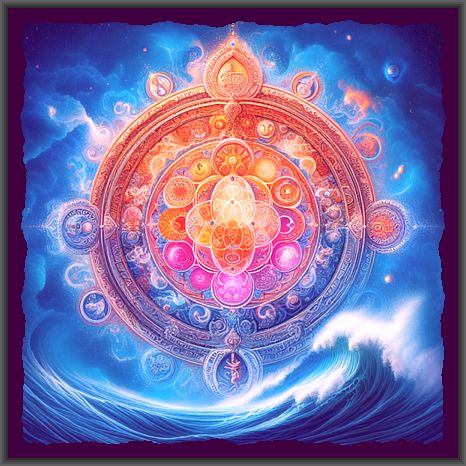
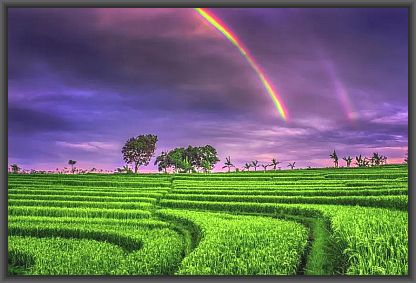
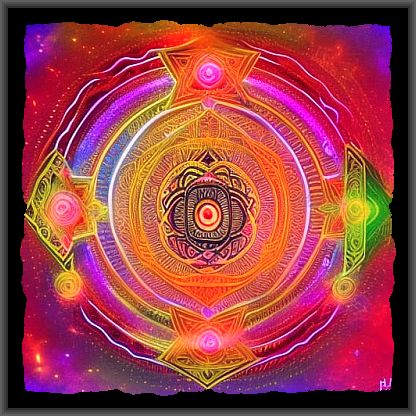
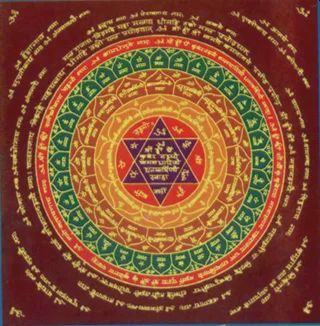
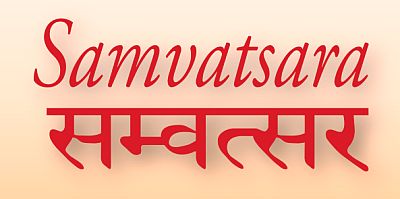
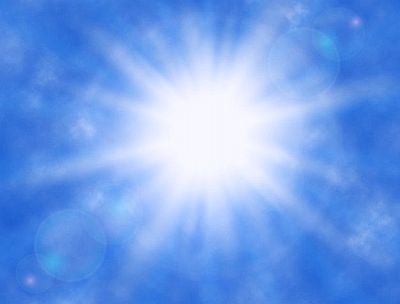
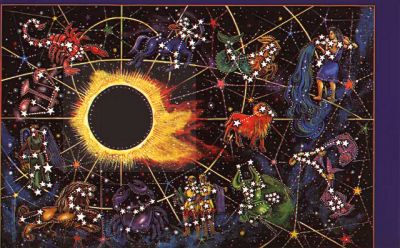
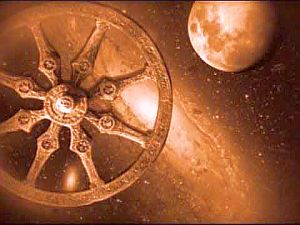


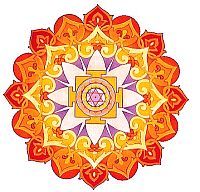


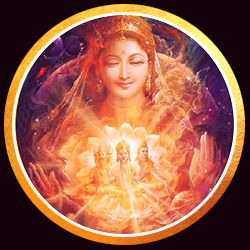
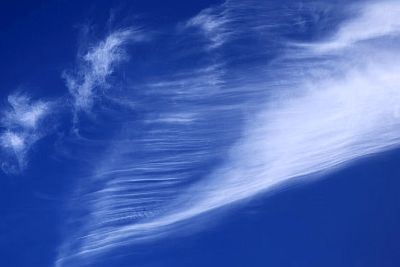
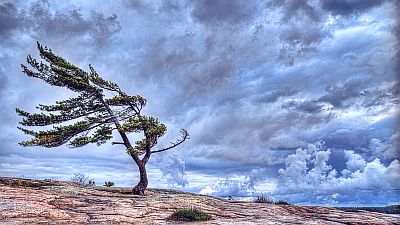
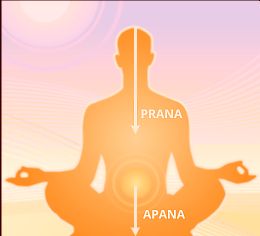

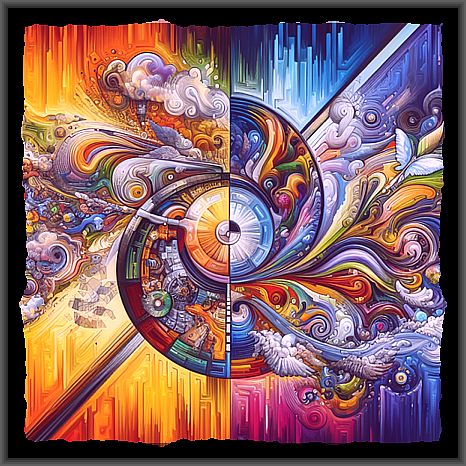
Dr. Tejaswi, PhD
May 28, 2025 at 2:31 am
A very nice exposition! may this aid the exposition you are presenting
https://worldteachertrust.org/_media/pdf/en/ek/suparna_suktam.pdf
sreenivasaraos
May 28, 2025 at 10:15 am
Thank you Sir
Regards